National flags symbolize much more than just national pride and identity. They have been battled for, representing freedom and the citizens’ unyielding resolve. For this reason, a quiet debate persists even to this day about the world’s most captivating flags. Learn about the countries with the most striking flags today.
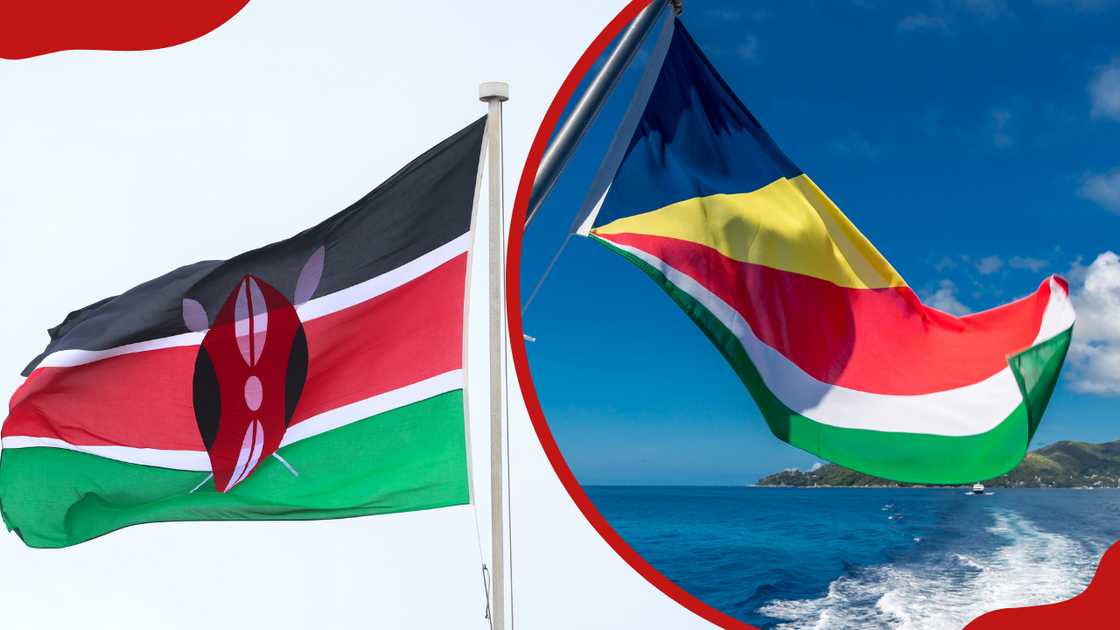
Most of us unknowingly develop a natural sense of patriotism, which is why we instinctively consider our national flags to be the most beautiful, even if they might not objectively be so. This might be due to the colors and symbols associated with them. Discover the world’s most aesthetically pleasing flags today. Please note that this list is subjective, as beauty is in the eye of the beholder.
The Flag of Singapore stands out for its bold design and simplicity. On a red background, a white crescent moon and five white stars are prominent.
| Ranking | Country | Continent |
| 1 | Kenya | Africa |
| 2 | South Africa | Africa |
| 3 | Mozambique | Africa |
| 4 | Malaysia | Asia |
| 5 | Nepal | Asia |
| 6 | Kyrgyzstan | Asia |
| 7 | Australia | Oceania |
| 8 | Argentina | South America |
| 9 | Brazil | South America |
| 10 | Cuba | North America |
| 11 | Greece | Europe |
| 12 | Canada | North America |
| 13 | New Zealand | Oceania |
| 14 | Bosnia and Herzegovina | Europe |
| 15 | United States of America | North America |
| 16 | Denmark | Europe |
| 17 | Mauritania | Africa |
| 18 | Tanzania | Africa |
| 19 | Guyana | South America |
| 20 | North Macedonia | Europe |
| 21 | Seychelles | Africa |
| 22 | Bhutan | Asia |
| 23 | India | Asia |
| 24 | France | Europe |
| 25 | Portugal | Europe |
The 25 Most Elegant National Flags Found Across the Globe
Throughout history, countries have altered their flags to embody the people’s determination that they identify with the emblem.
They serve as a symbol of pride, particularly when their citizens encounter foreign environments. While most countries would claim that their flag is the most attractive, we have compiled the top 25 countries with the most visually striking flags.
1. Kenya
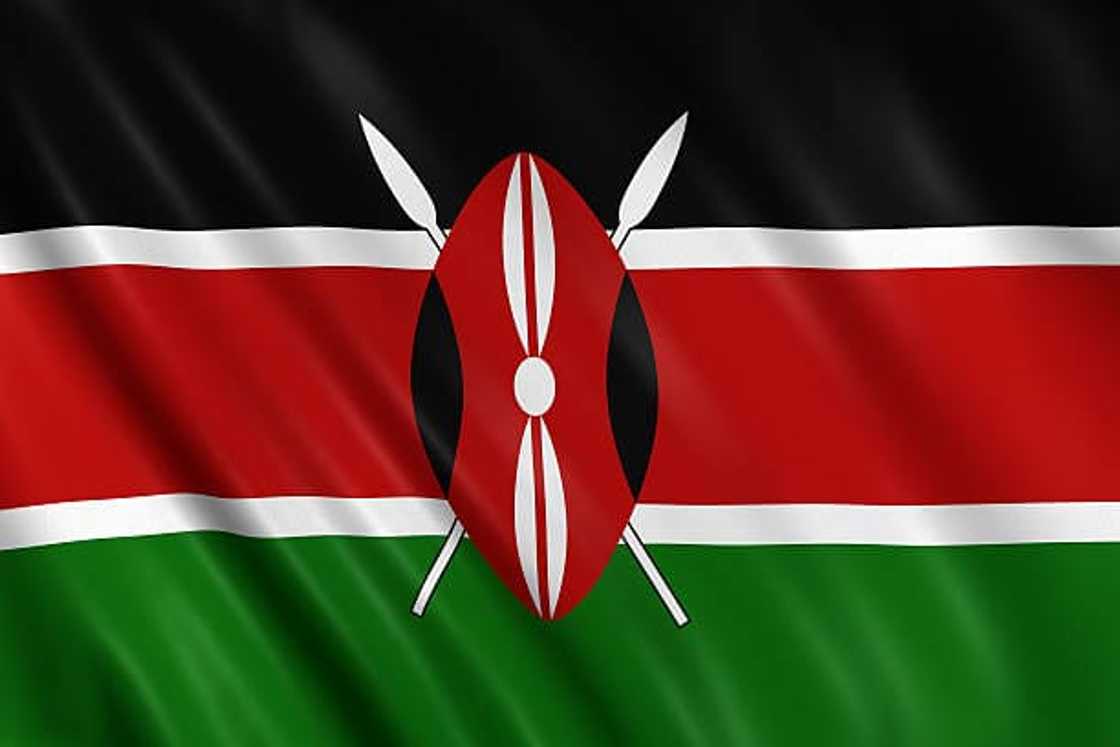
The Kenyan flag is arguably the most stunning flag worldwide in 2024. It has been utilized since 1963 and it features a shield situated before two crossed spears at its centre. These are embedded in a horizontal arrangement of the colours black, red, white, and green. The green colour symbolizes the country’s natural environment and its wealth.
The black color represents the Kenyan people and the African continent. Red signifies the blood that was shed during the fight for independence. White embodies peace and unity, while the shield and spears symbolize Kenya’s defense of all the elements represented.
2. South Africa
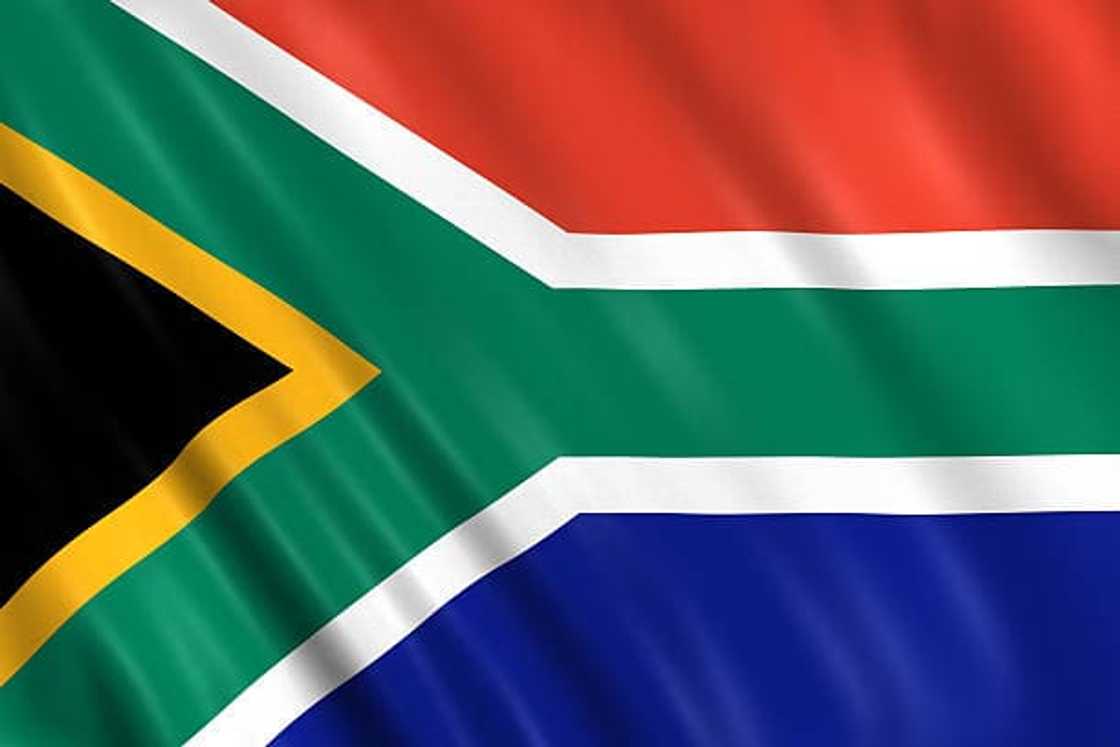
Adopted and utilized since 1994, the South African flag is ranked among the world’s most attractive flags. It encapsulates the country’s history spanning several centuries. Although beautifully-designed, the symbolic meanings of South Africa’s flag’s colors have not been explained in an official capacity.
It is thought to have adopted the colours black, green, and yellow from the flag of Nelson Mandela’s African National Congress (ANC). The colours red, white, and blue, on the other hand, were part of the Transvaal flag.
3. Mozambique
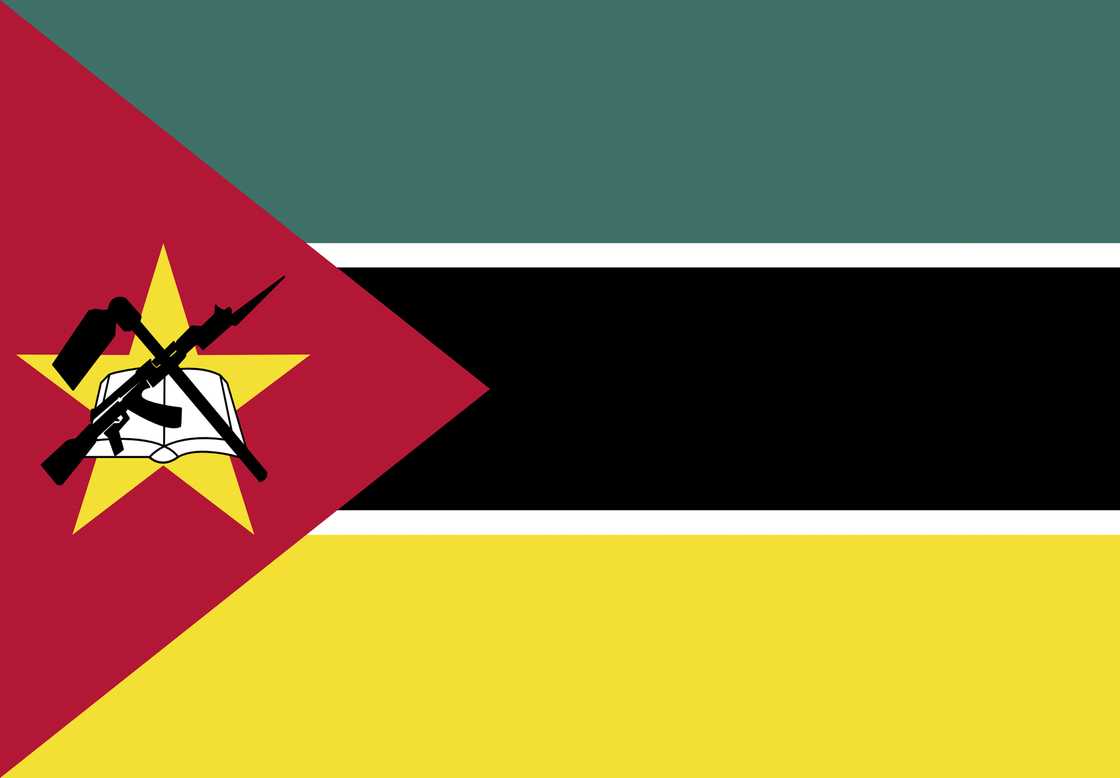
The flag of Mozambique is renowned for its distinctive design, which includes an AK-47 to commemorate and honor the bloodshed that occurred during the country’s fight for independence. It is now one of the top 10 most visually appealing flags in the world, as listed for 2024.
The official first adoption of the flag was in 1983. On the welfare side of the flag are a drum, AK-47, book and star. The book signifies the significance of education. The drum represents the value of agriculture as the foundation of the country’s economy.
The green represents Mozambique’s abundance of land; white signifies peace, black signifies Africa, yellow represents the country’s minerals and red symbolises the brutal fighting for independence.
4. Malaysia
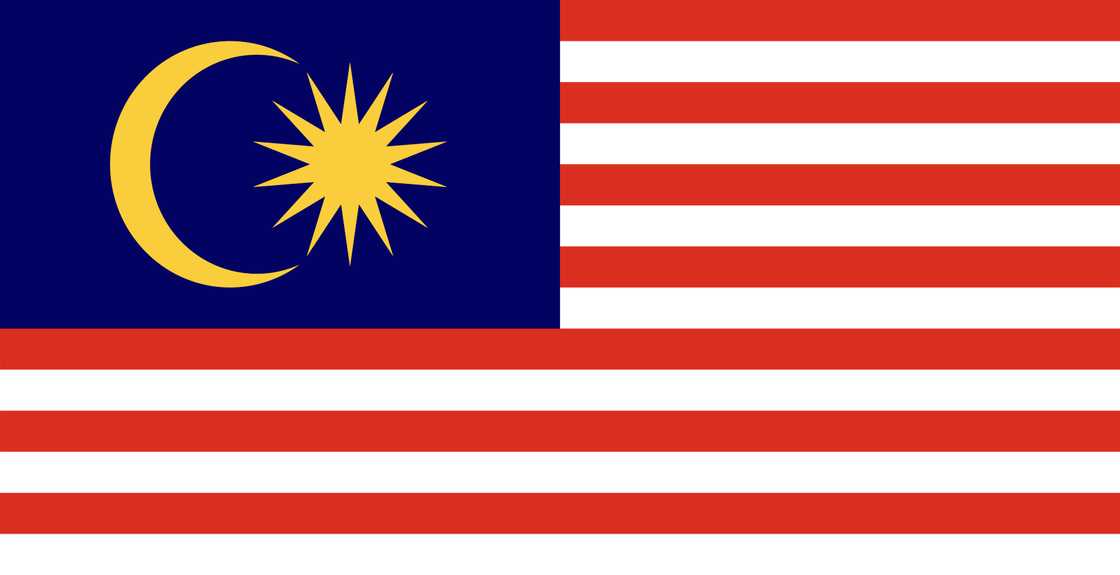
“Stripes of Glory” has been used since 1963. The Malaysia flag features 14 alternating stripes of white and red, and has a blue canton with a crescent and a fourteen-pointed star, known as the Bintang Persekutuan (Federal Star).
The white and red stripes in the national flag signify the 13 states and federal territories of Malaysia. The 14 points of the star represent the unity among the states. The crescent moon is a representation of Malaysia’s official religion, Islam. The yellow colour is a nod to the royal colours of the Malay rulers.
5. Nepal
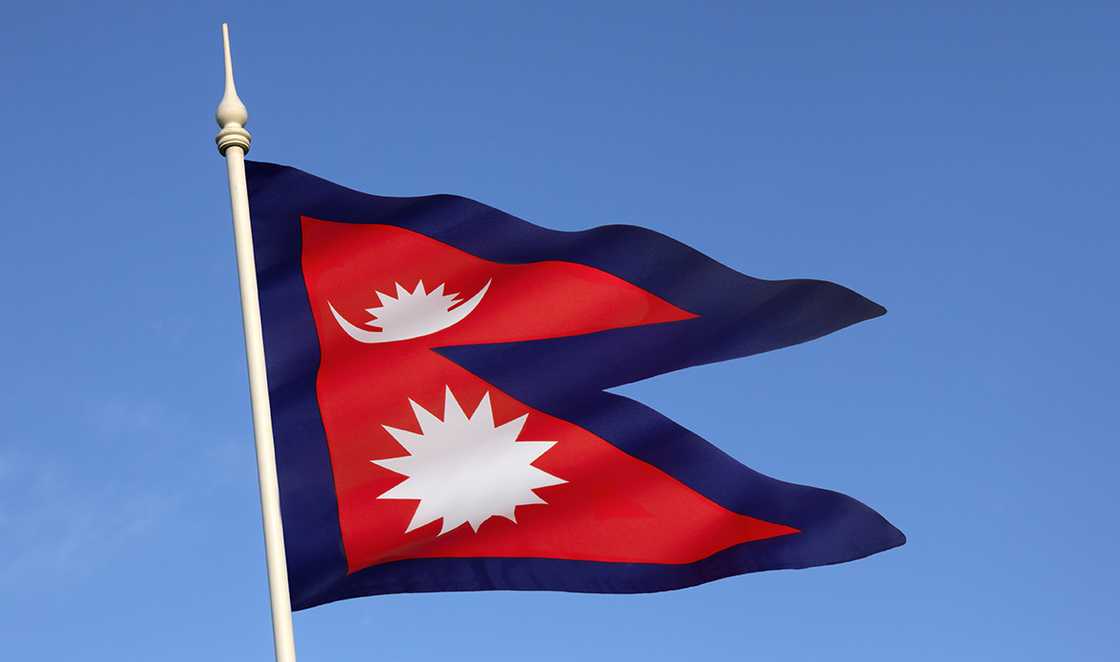
The flag of Nepal is considered one of the top 10 most stunning flags globally. Its flag is striking and distinctive, thanks to its unconventional shape, which deviates from the typical rectangular design.
The country is represented by two complementary motifs: the moon, symbolizing serenity, and the sun, representing determination. The primary color is a deep crimson red, reminiscent of the national flower, the rhododendron. The outer edges are adorned with blue hues, an emblem of tranquility and peace.
6. Kyrgyzstan
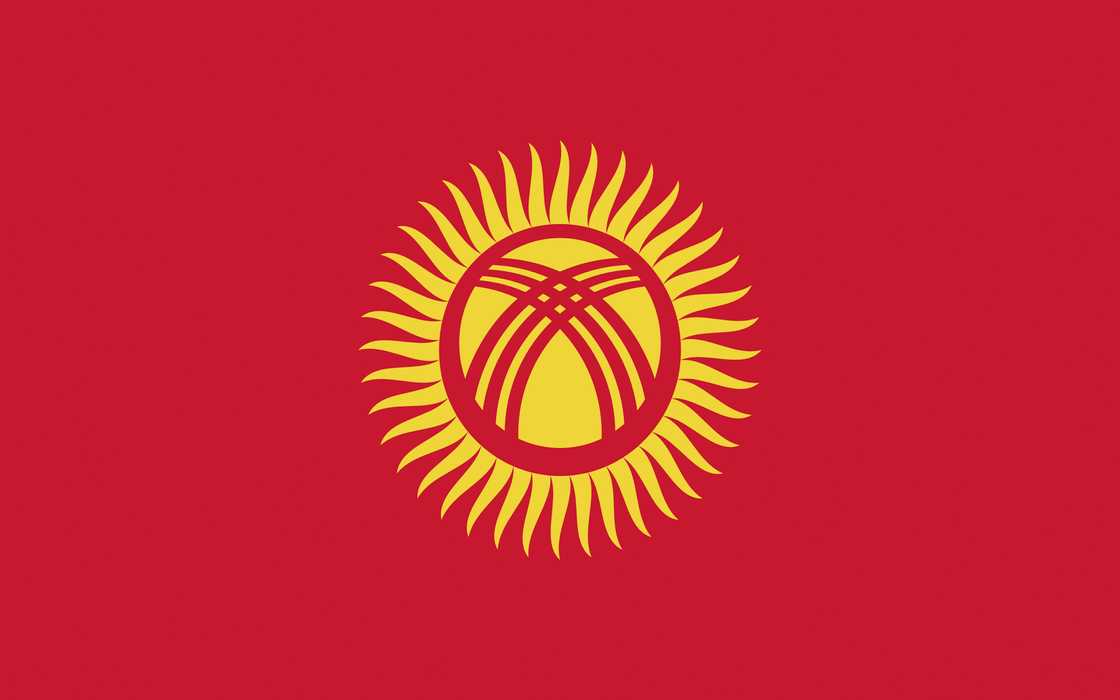
Formerly a member of the Soviet Union, Kyrgyzstan declared independence but didn’t utilize a national flag until six months later, in 1992. The Kyrgyzstan flag displays a striking red background to symbolize the bravery of its people.
A yellow emblem of the blazing sun in its center signifies peace and prosperity. The forty rays radiating from the sun symbolize the Kyrgyz tribes that came together to resist the Mongol invasions. The curved lines inside the sun are representations of a tunduk, the superior section of the traditional Kyrgyz yurt and home.
7. Australia
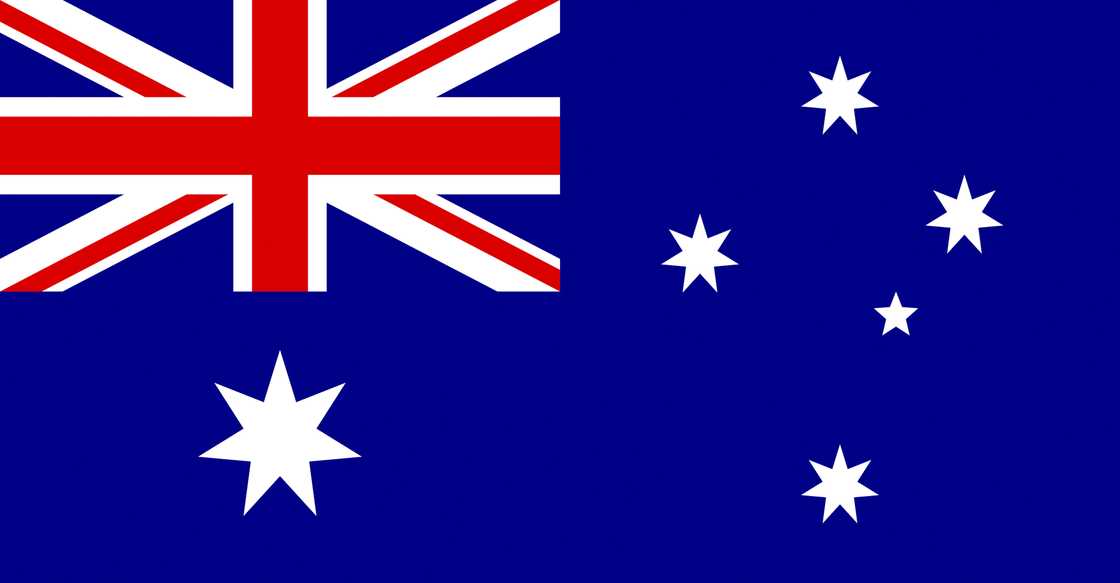
Australia’s flag is pleasing to the eye and steeped in symbolic meaning. It ranks amongst the top 20 most aesthetically pleasing flags globally. The flag boasts a robust tribute to the Commonwealth through the Union Jack in the canton situated at the upper-left corner.
Below the Union Jack is a large star with seven points, similar to the Commonwealth emblem. On the right-half of the Australian flag are five stars of varying sizes, representing the Southern Cross constellation visible from Australia.
8. Argentina
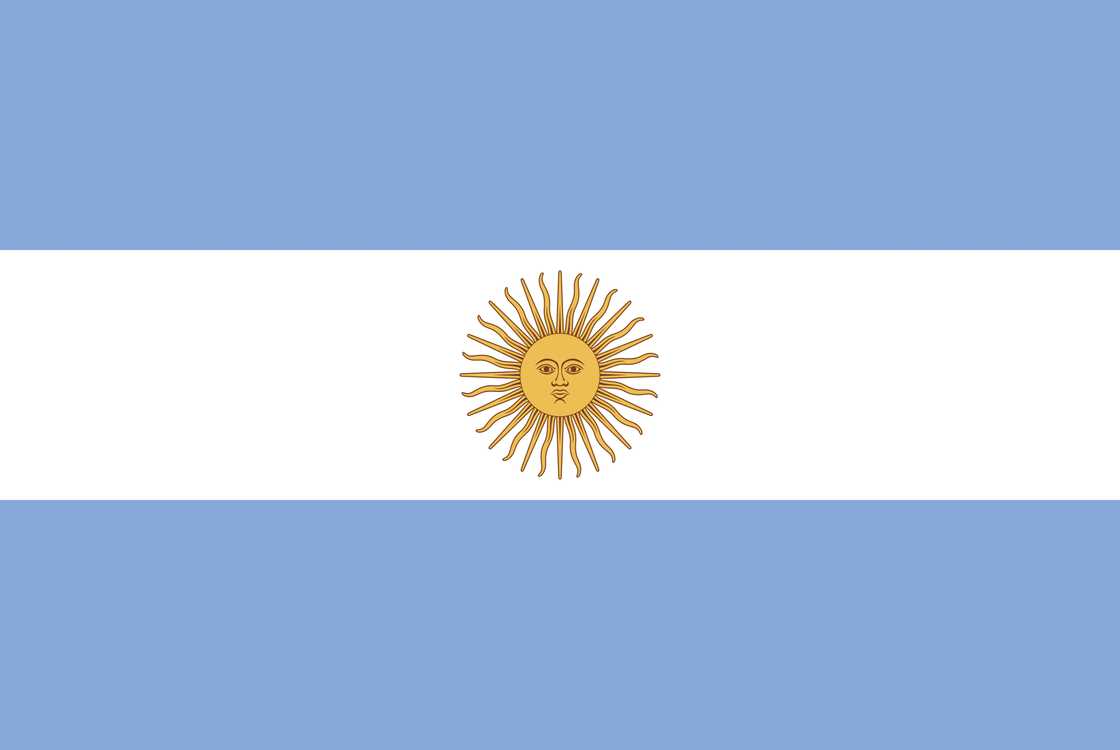
Argentina has one of the world’s top 10 most stunning flags. The Argentine national flag includes two light blue (or sky blue) horizontal bands at the top and bottom, with one white central band. A breathtaking golden “Sun of May” is prominently displayed in the center.
9. Brazil
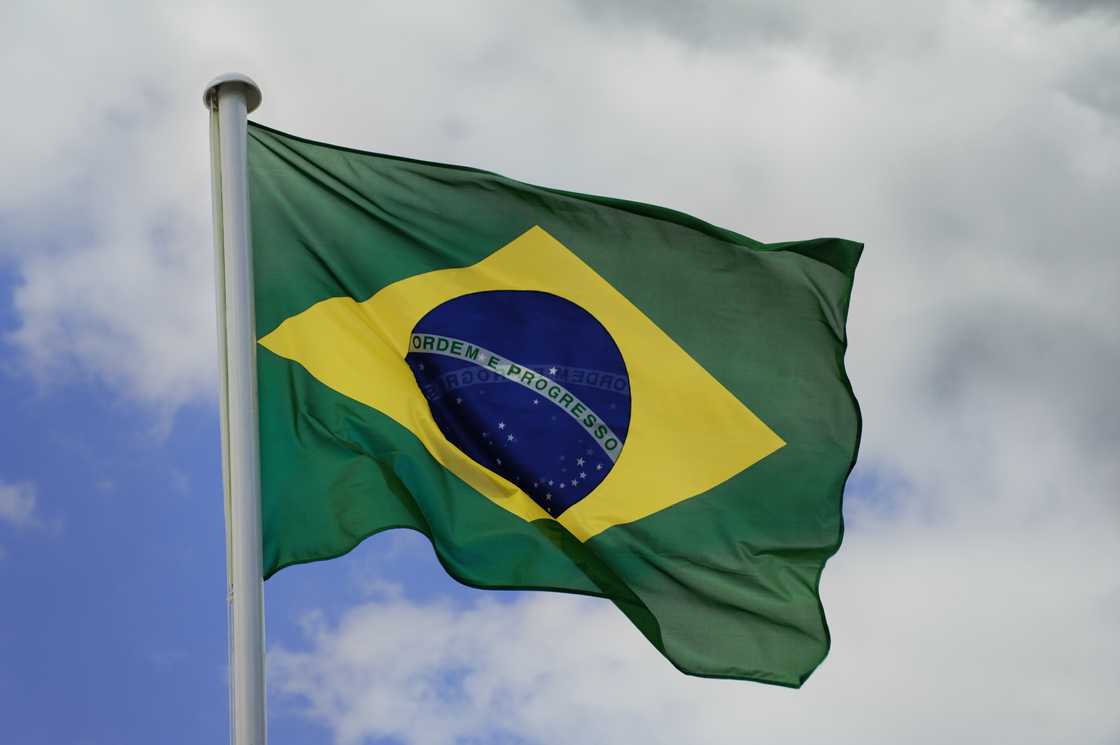
The official flag of Brazil is Auriverde, adopted in 1889, and is one of the memorable nation flags with several underlying symbols. Its green hue represents the country’s grasslands and woodlands. Conversely, yellow evokes a recollection of the country’s rich gold reserves.
At its center is a blue-colored globe representing the night sky, observed from Rio de Janeiro. Small white stars represent a Brazilian Federative Unit within the globe. Lastly, the motto “Ordem e Progresso” (Order and Progress) encircles the globe, inspired by French Philosopher Auguste Comte’s positivism motto.
10. Cuba
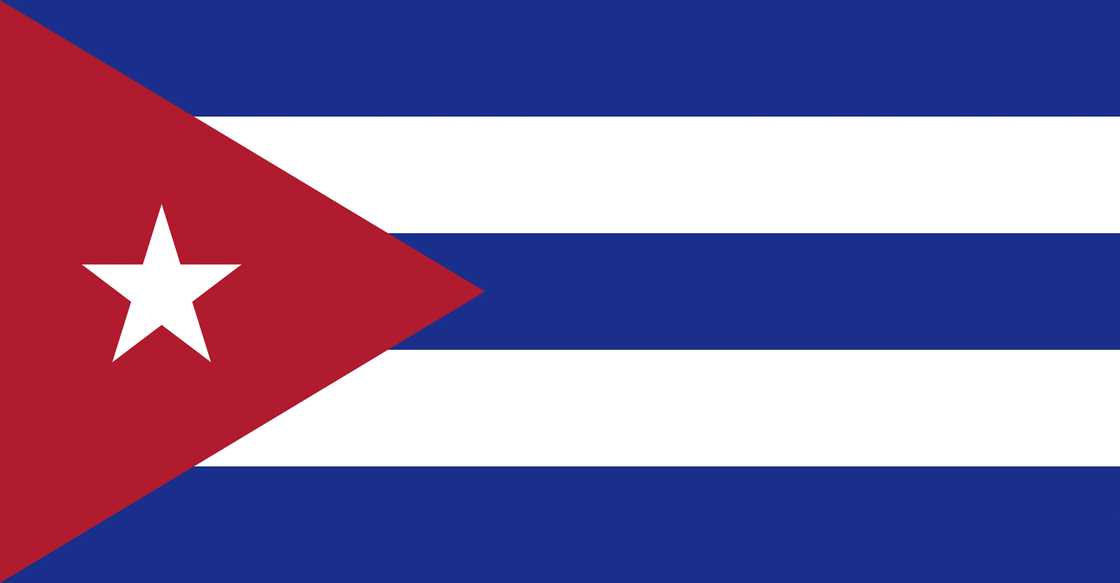
The Cuban flag was designed years before the country achieved freedom. The concept of a free Cuba influenced its creation. It was designed in 1849 by Narciso Lopez. Despite never witnessing it flying over Cuba, his work has become a timeless symbol of the country’s determination and the pursuit of independence.
The white stripes stand for the innocence of concepts, with the corresponding blue stripes symbolizing the three executive divisions of Cuba. The red section at the top signifies courage, and the star within the red triangle represents the crown of the newly formed nation.
11. Greece
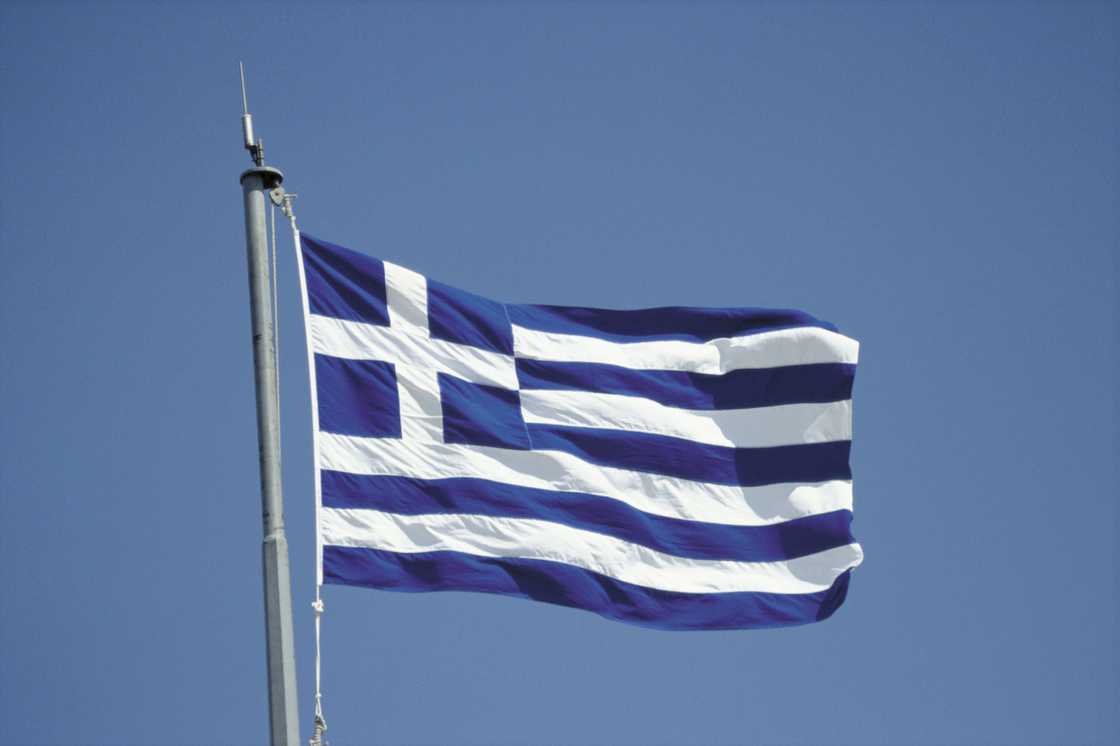
The Greek flag is reminiscent of the country’s enchanting turquoise waters and picturesque coastlines. Although it may not appear overly complex, its symbolism is not shallow. It is one of the nations with the most visually stunning flags globally in 2023.
or death
The cross at the farthest corner symbolizes the country’s officially recognized religion, Eastern Orthodox Christianity.
12. Canada
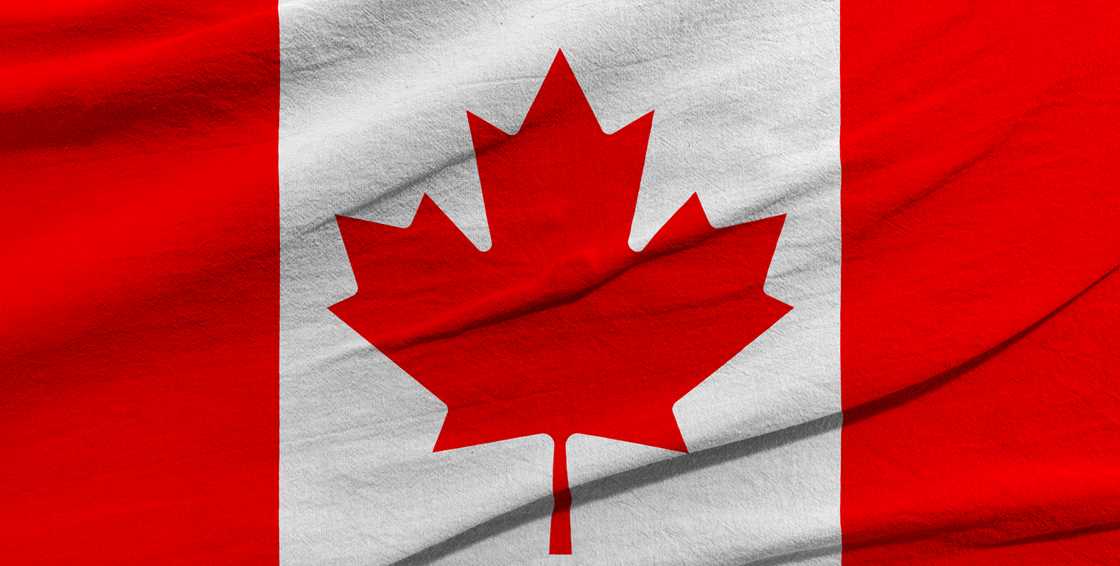
Canada boasts an iconic flag that is widely regarded as one of the coolest in the world. Its distinctive red maple leaf symbol is prominently featured at the centre. Canada’s flag was adopted in 1965, following the country’s history of being under British colonial rule. The current design was ultimately selected from an initial shortlist of three options, standing out for its simplicity and effectiveness. Characterized by a predominantly red and white colour scheme.
The maple leaf is a symbol of Canadian identity, embodying bravery, commitment and national pride. It also comprises eleven points, with ten denoting Canada’s 10 provinces, and one representing its three territories.
13. New Zealand
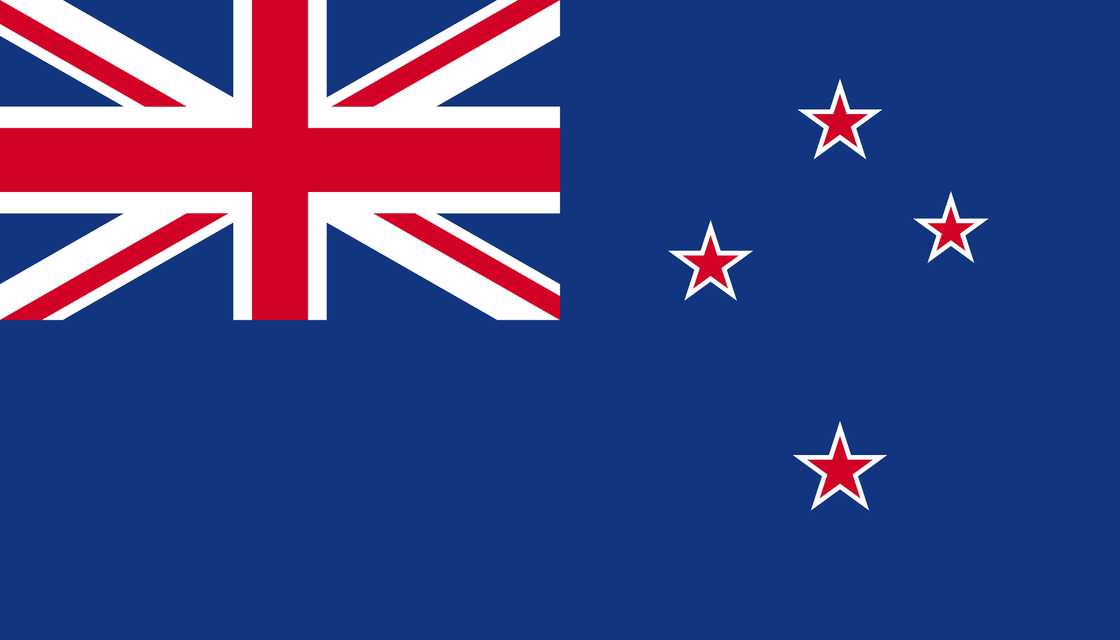
New Zealand bore the Union Jack flag for the majority of its history, which categorized it as a British colony and dominion. Nevertheless, in 1902, it adopted its present flag. As of now, the country displays the British flag in the upper left corner.
The national flag of New Zealand features three colours: royal blue, red, and white. The colour royal blue is reminiscent of the official Blue Squadron of the Royal Navy. The red stars on the flag represent New Zealand’s position in the Southern Hemisphere geographically. Furthermore, they also serve as an acknowledgment to ancient Maori mythology.
As recently as 2016, New Zealand citizens voted between their current national flag and a new one featuring their iconic silver fern – but the original design won and remains the national standard to this day.
14. Bosnia and Herzegovina
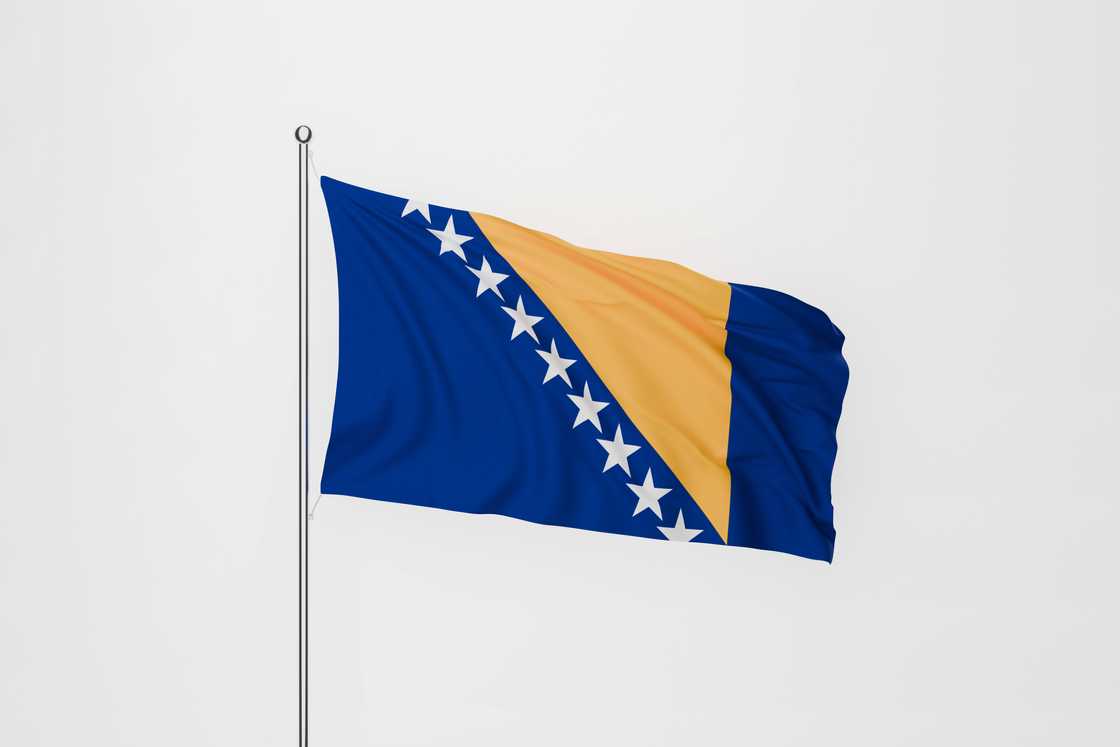
Bosnia and Herzegovina may not be the world’s most well-known country, but it likely boasts the finest flag globally. The aesthetic design of the Bosnia & Herzegovina flag is coupled with multi-layered symbolism. Its three colors are yellow, blue, and white.
The points of the yellow triangle represent the three main ethnic groups: the Bosniaks, Croats, and Serbs. The white stars that run diagonally symbolize the many European countries, indicating Bosnia & Herzegovina’s status as one of Europe’s good neighbors.
15. The United States of America is located in North America
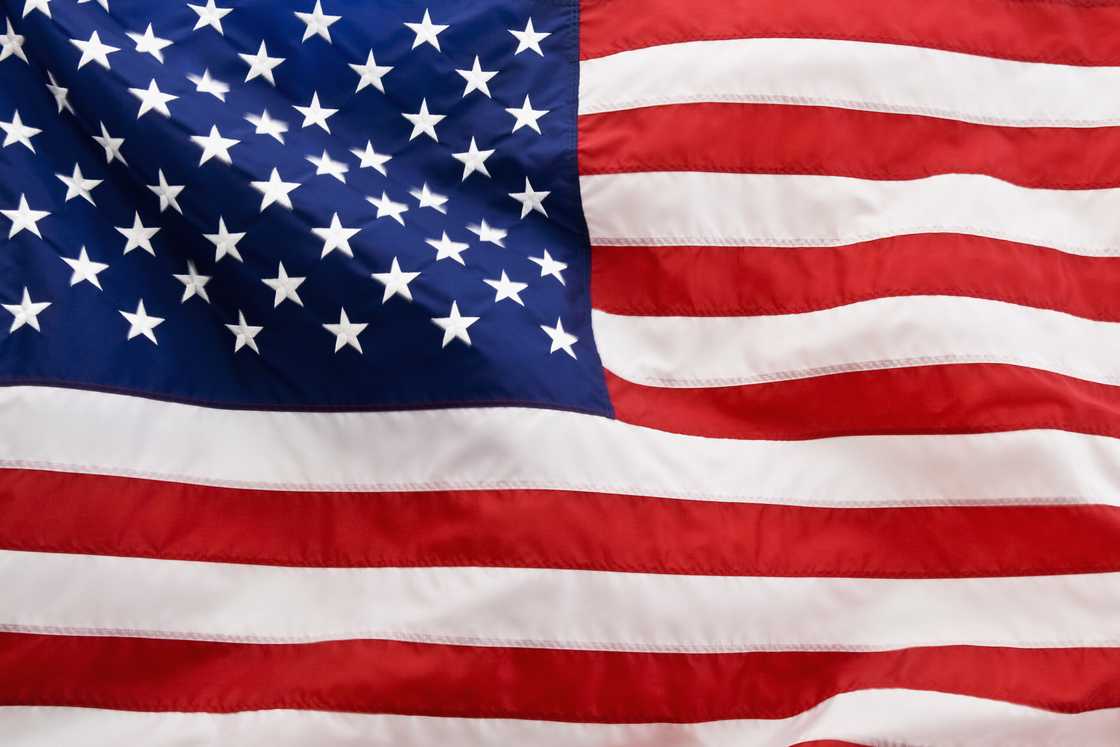
The United States flag is a symbol of great historical importance and well-known around the world. It ranks among the most widely recognized flags globally. The flag was adopted when Hawaii became a US state, which occurred in the year 1960. It features a total of 50 stars, representing the current number of states within the USA. Additionally, the 13 red and white stripes pay tribute to the original 13 British colonies that unified to become the first states of the United States.
The American flag may remain intact, with the District of Columbia and Puerto Rico aiming to become US states. In that scenario, its design will need to be altered to incorporate additional stars representing the new states.
16. Denmark
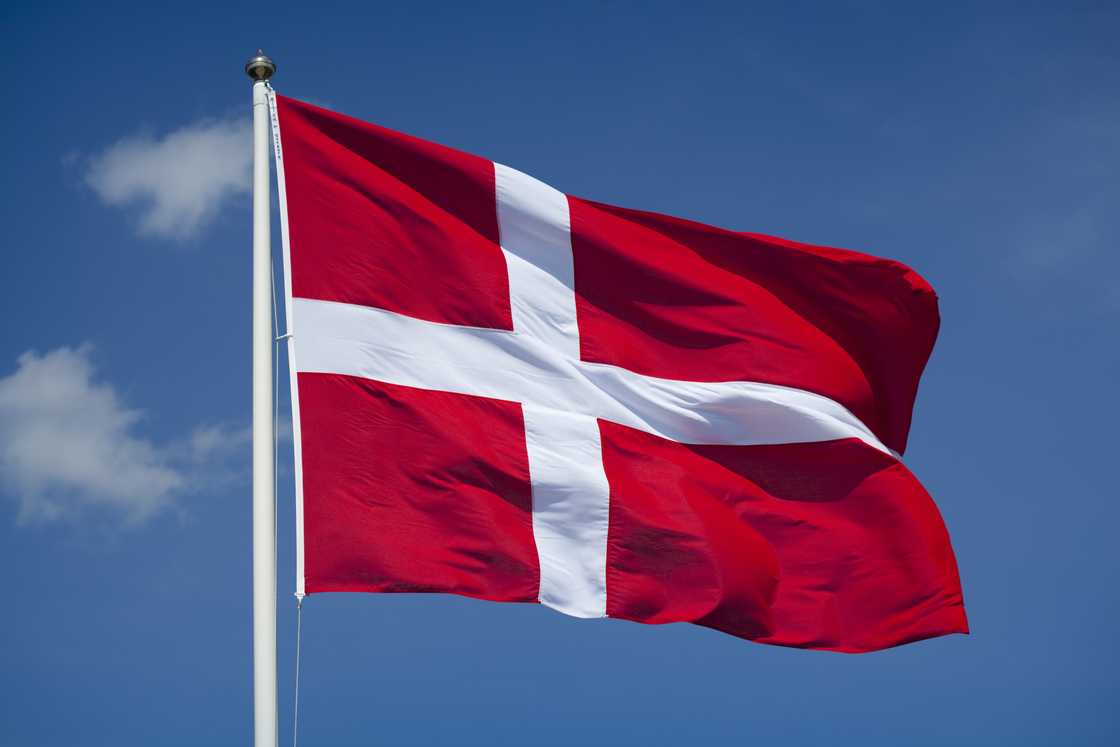
The flag of Denmark displays a red background with a white cross extending from one corner to the opposite corner. This cross signifies the Danish people’s Christian heritage, and the red background serves as an emblem of the country’s monarchical past. The flag has been in use since the 13th century and is widely regarded as the oldest continuously used national flag globally.
17. Mauritania
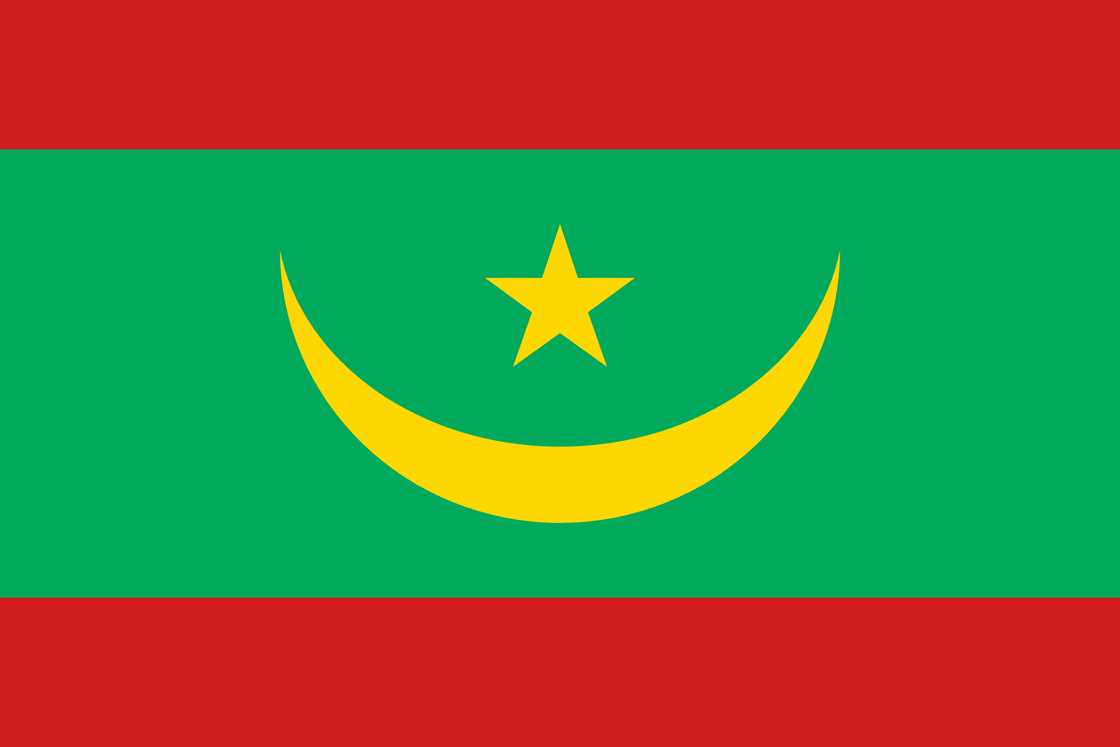
The flag of Mauritania features a green background, with a yellow crescent and star in the center. The green color represents the Islamic faith, while the crescent and star signify the faith as a whole. Additionally, the flag’s colors reflect the country’s two dominant ethnic groups: the black majority and the Arab-Berber minority. The flag was formally adopted in 1959 and serves as a distinct emblem of Mauritanian identity.
18. Tanzania
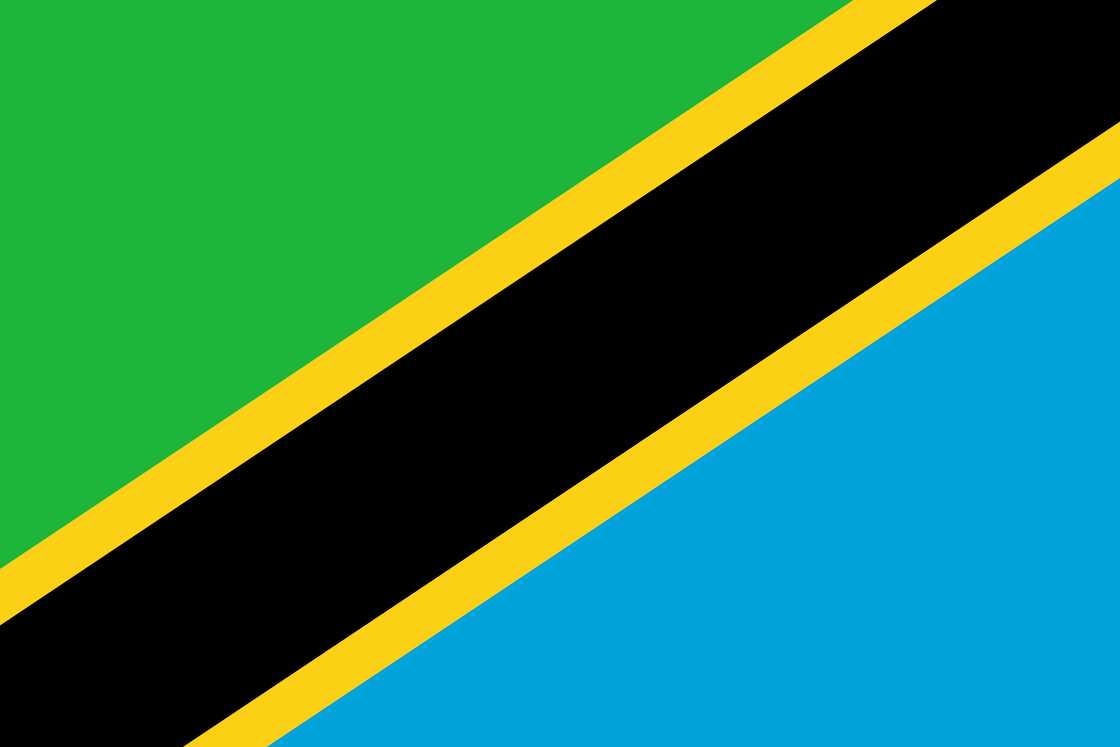
The flag of Tanzania is made up of a yellow-edged black diagonal band split diagonally from the bottom left corner; the upper triangle (on the left side) is green, and the lower triangle is blue. The flag was officially adopted on 30 June 1964, when the colony of Tanganyika gained independence.
A black-edged yellow band represents the African continent and the people of Tanzania. A green triangle depicts the country’s natural vegetation and vast agricultural resources. A blue triangle symbolizes the Indian Ocean and the nation’s ambitions for advancement.
19. Guyana
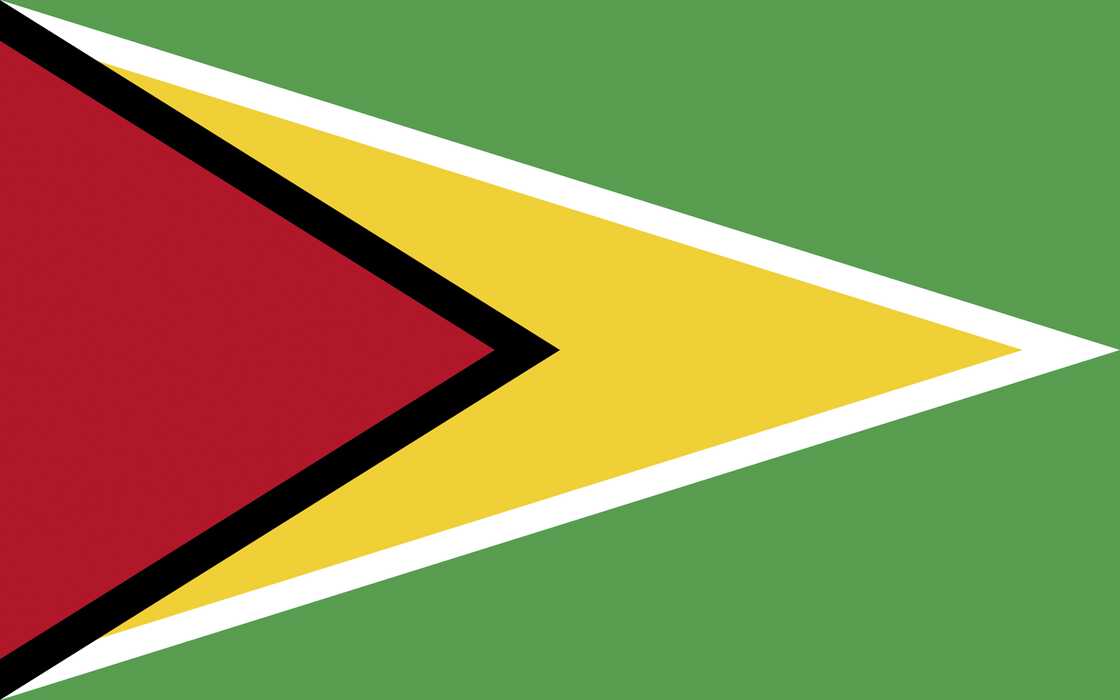
The flag of Guyana features five distinct colors: green, gold, white, black, and red. The green border represents the country’s agricultural and forested landscape, whereas gold signifies Guyana’s rich mineral resources.
The white color symbolizes Guyana’s rivers, seas, and waterfalls. Black signifies the hardworking and persevering spirit of the Guyanese. The red color represents the nation’s zeal and energetic people. In addition, the national emblem features a cane furnace and an oar-staffed Amerindian canoe, highlighting Guyana’s industrial and agricultural roots.
20. North Macedonia
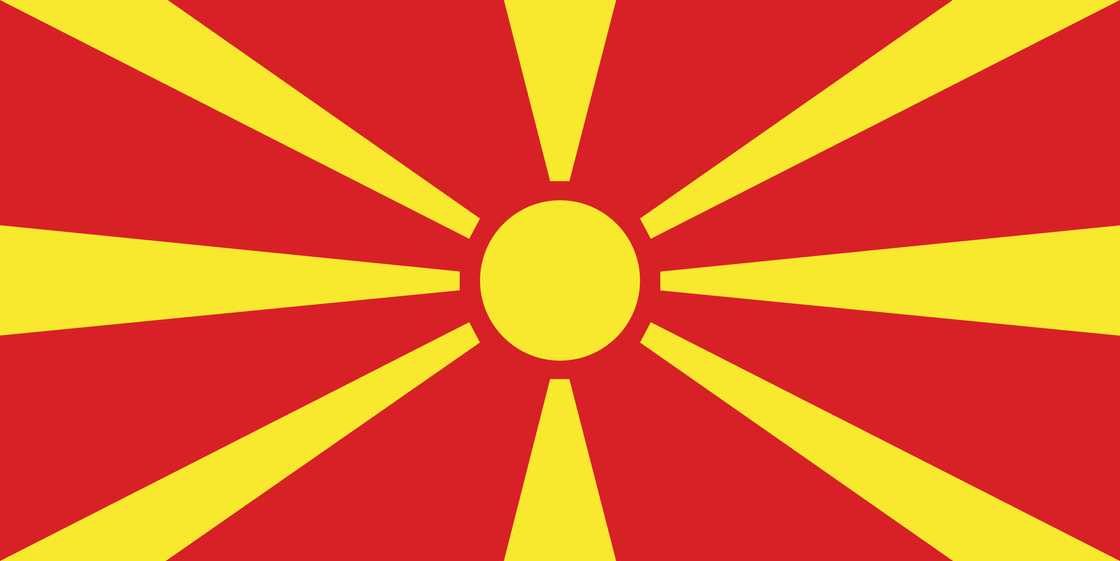
The flag of North Macedonia consists of three horizontal stripes: red, yellow, and green. The red color signifies bravery, while the yellow represents the country’s abundance and beauty. Green signifies the rich natural resources of the country and the hopes for its future prosperity. The current national flag was adopted in 1995, following the dissolution of the previous Yugoslav nation.
21. Seychelles
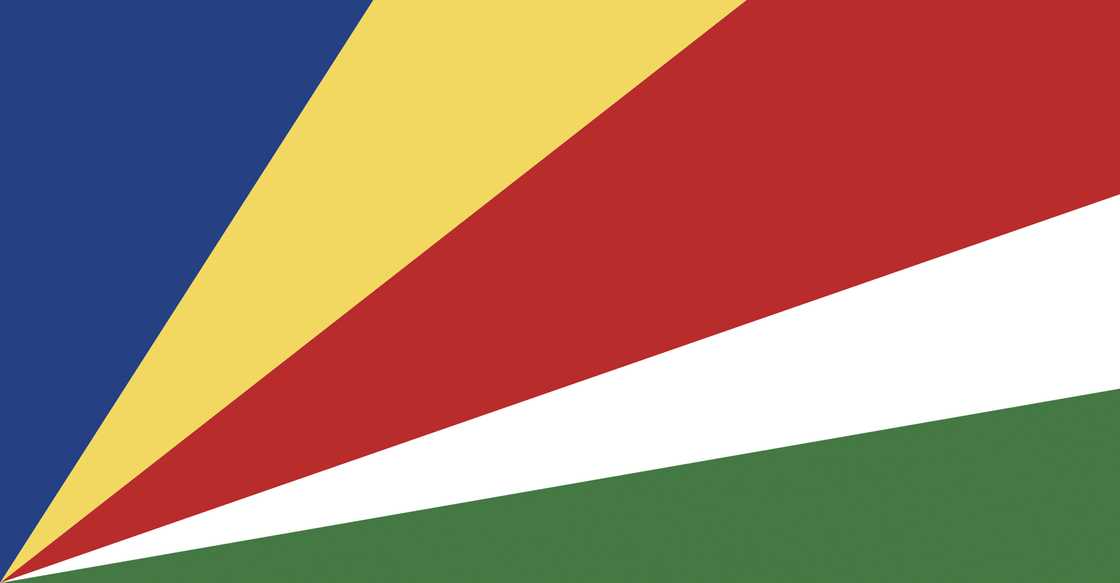
The flag of Seychelles is vibrant and unique, reflecting the dynamic character of the country. The design of the Seychelles flag was adopted on the 18th of June in 1996.
The flag is rectangular in shape, with five diagonal stripes extending from the lower left corner upwards towards the top right edge. The blue colour at the top left side symbolizes the sky and the surrounding sea that surrounds the islands.
These colors represent the country’s essence: yellow for the sun that brings vitality, red for the people’s unwavering unity and optimism, white for the pursuit of social balance and peace, and green for the island nation’s lush landscape and commitment to environmental conservation.
22. Bhutan
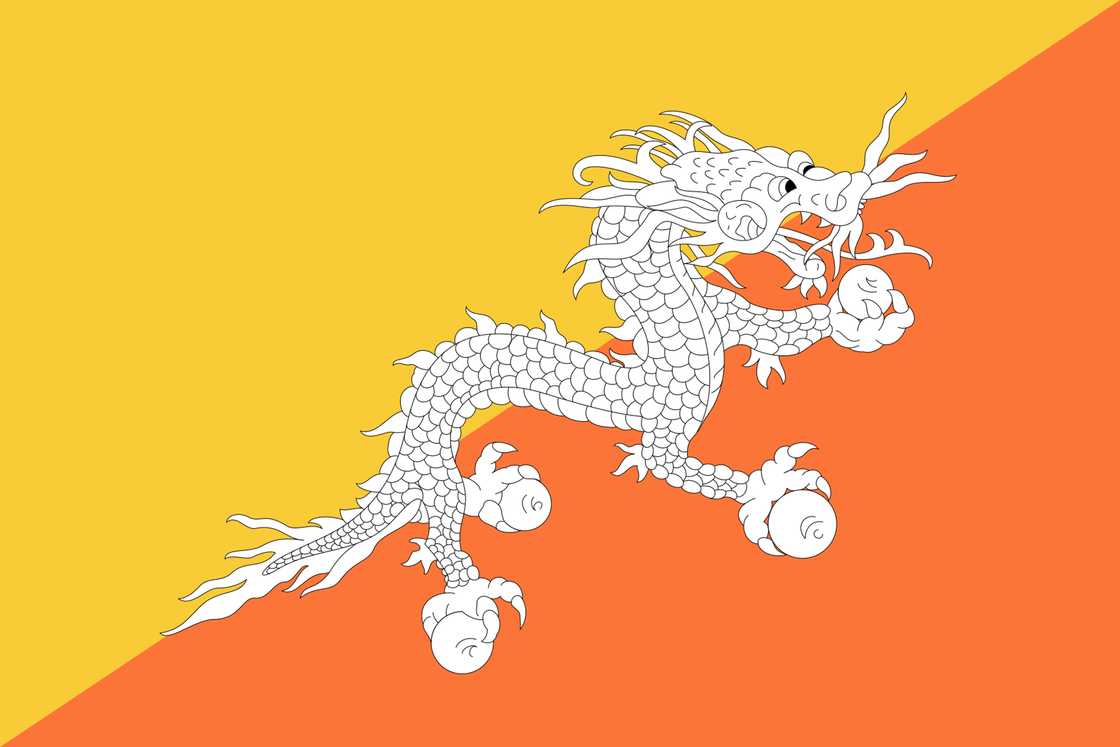
Bhutan’s flag design was officially adopted in 1969. The flag of Bhutan is uniquely designed and full of symbolism, representing the nation’s rich cultural background and its strong Buddhist roots. The flag is rectangular and divided at an angle from the lower corner adjacent to the rope to the upper corner opposite the rope. Yellow symbolises the power of the monarch of Bhutan.
In the culture of this country, orange symbolises the spiritual tradition, particularly Buddhism, which has a strong presence. The white colour of the dragon represents its commitment to purity, and the jewels held in its claws signify the country’s wealth and prosperity. The dragon’s fierce mouth signifies the bravery and determination of its people in defending their homeland.
23. India
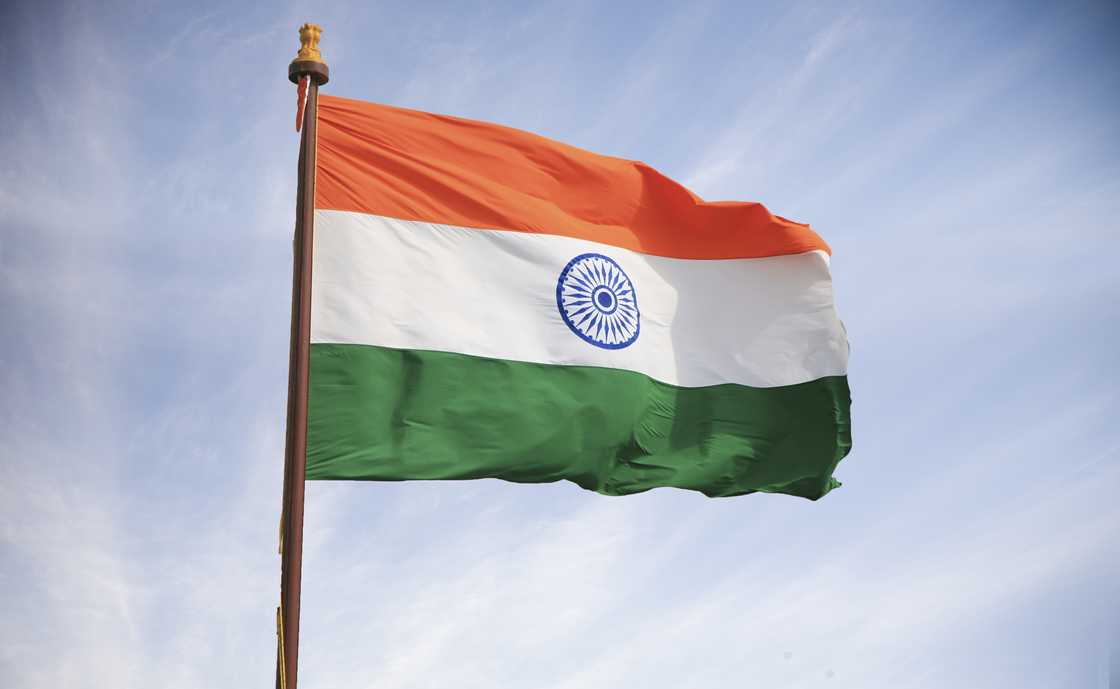
The official flag of India was adopted on July 22, 1947, just before India obtained independence from British domination. It has a rectangular shape with three horizontal stripes of different colors.
Orange signifies valour, selfless sacrifice, and the spirit of renunciation. White embodies truth, serenity, and chastity, whereas green symbolises devotion, fertility, and the vibrant fullness of the land. In the heart of the white stripe is a navy blue wheel called the Ashoka Chakra. This wheel, consisting of 24 spokes, represents the Dharma Chakra.
24. France
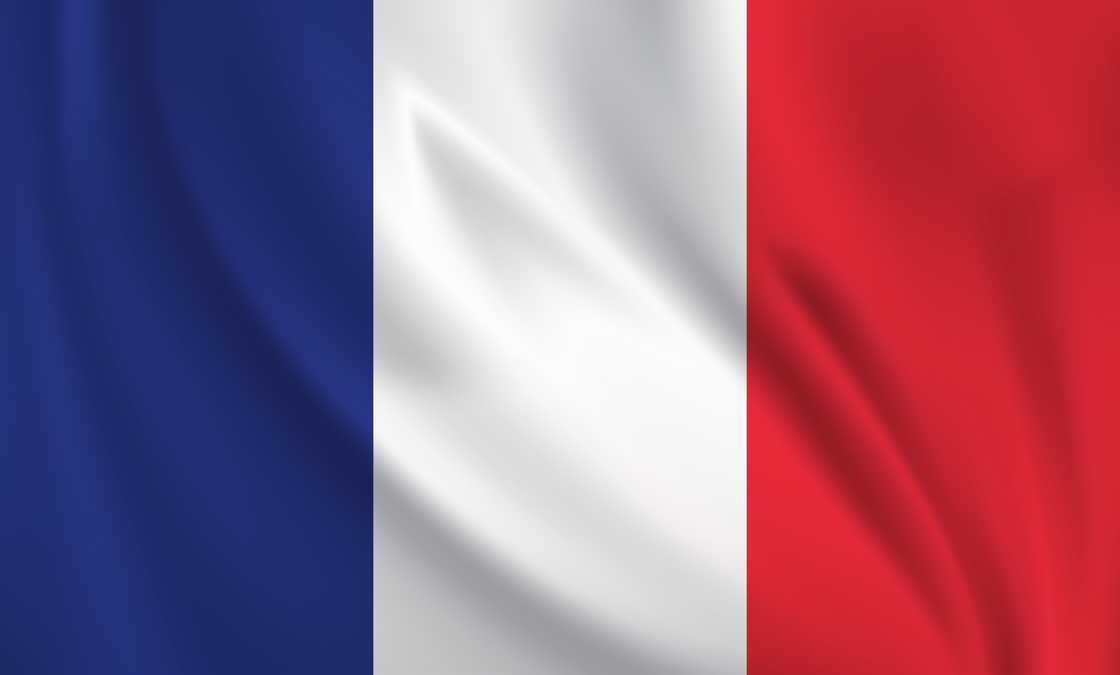
The flag of France, known as the Tricolore, is an emblem that represents the country with simplicity and distinction. It features a rectangular design with three vertical stripes of the same width; the blue stripe on the left symbolizes freedom. The central white stripe represents equality, and the red stripe on the right signifies brotherhood.
25. Portugal
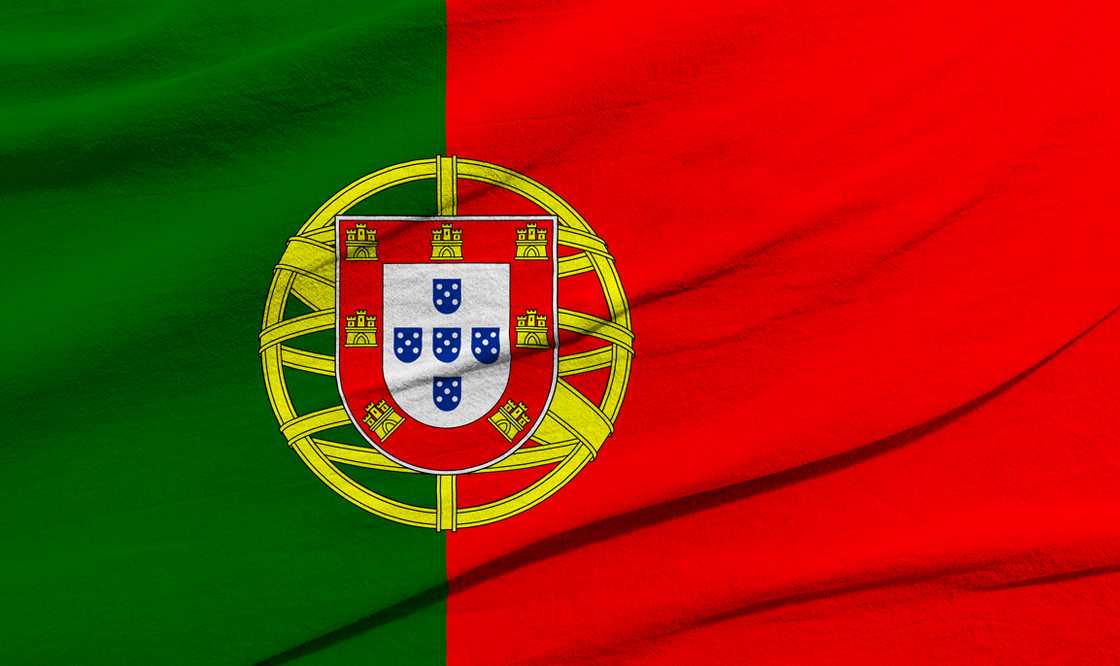
The flag of Portugal was officially adopted on June 30, 1911, shortly after the establishment of the Portuguese Republic. The flag is rectangular and divided vertically into two unequal parts.
The left side of the flag is a shade of green, occupying approximately two-fifths of its overall width. This colour embodies hope and pays tribute to the 1640 Portuguese Revolution, which marked the re-establishment of the nation’s independence from Spanish rule.
The right side of the flag is represented by a red colour, symbolizing the bloodshed and struggles that the Portuguese people have endured throughout their history. The flag prominently displays the national coat of arms, where the green and red fields intersect, with an intricate coat of arms also featured.
What is considered the most visually pleasing flag across the globe?
Some of the most visually appealing national flags in the world include those of Kenya, Tanzania, the United States, South Africa, Mozambique, Portugal, India, Nepal, Malaysia, Australia, and Seychelles.
What country’s flag is most distinguishable from others?
Nepal boasts the most distinctive national flag in the world, featuring an intriguing design. It stands out as the only flag globally that defies the traditional rectangular shape, comprising two pennant shapes – a deep blue border and a bold crimson red background.
Which nation’s flag is the most vibrant and colorful?
Belize has the flag with the most pronounced visual appeal worldwide. The flag features 12 distinct colors, with most of them being a part of the coat of arms that give it its intricate complexity.
There’s no definitive answer, as opinions on which country’s flag looks the best can vary greatly.
The countries that are often cited as having the most visually appealing flags include India, Kenya, Australia, Nepal, South Africa, the United States, Seychelles, New Zealand, Portugal, North Macedonia, and Bhutan.
Government-identified symbols are fundamental to a nation as they bring people together and evoke national pride. They convey a sense of unity and often inspire individuals to risk fighting for their country, a reality that governments sometimes compartmentalize in times of conflict. Countries like no others possess remarkable flags that+iND feature an irresistible combination of beauty and multifaceted symbolism.
.co.ke recently published a list of the most perilous countries in Africa to visit. Terrorism and political turmoil are the primary causes of the decline in safety in African nations.
Violence and conflict have ravaged many countries in Africa due to power struggles, disputed election results, tensions between ethnic groups, and charges of corruption. Research the African countries with the highest risk for travelers.





